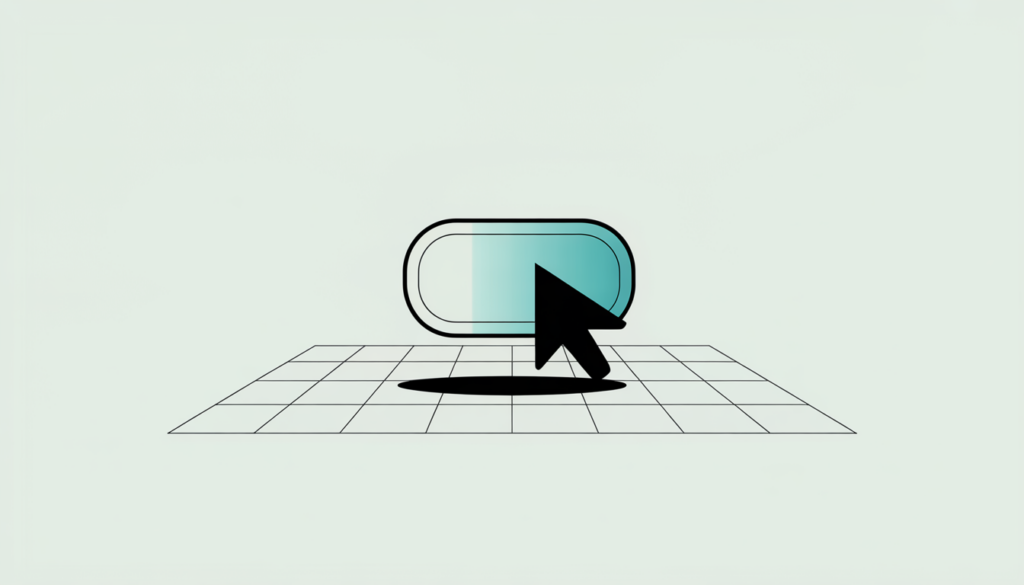Imagine signing up for a free trial or newsletter — simple enough, right? But when you try to cancel or unsubscribe, confusing menus, hidden buttons, or endless loops try to stop you. Welcome to the Roach Motel dark pattern: easy to get into, nearly impossible to escape.
Coined by UX specialist Harry Brignull, this deceptive design tactic traps users in subscriptions, services, or processes they no longer want. But what does it look like in action? Why do businesses still use it despite the backlash? And how does it affect user trust and brand reputation?
In this article, we’ll unpack real-world examples of the Roach Motel. We’ll explore the psychological tricks behind it and share what ethical design looks like instead. Stick around till the end — you might realize just how common this tactic really is and discover how you can avoid falling for it.
What Is a Roach Motel Dark Pattern?
A roach motel dark pattern is a sneaky way to make websites hard to leave once you’re in. It’s easy to get in but hard to get out. This trick uses design to trick users into choices they might not want.
This kind of design traps users in unwanted situations. It might look good at first, but it can hurt trust and satisfaction in the long run. It’s important to focus on making websites easy to use and honest.
How Roach Motel Patterns Manipulate Users
Roach Motel patterns use deceptive design to control how users act. These patterns, a type of dark pattern, make users choose things they didn’t mean to.
They are hard to get out of. They use tricks like making users think they’ll lose something if they don’t act fast. This makes users buy things they didn’t want to.
Forced Continuity is a common trick. It makes users sign up for a free trial that turns into a paid subscription without them knowing. They often realize it only after the company charges them.
This not only messes up the user’s experience but also makes them feel cheated. It can hurt the brand’s reputation and make users lose trust.
Using these tricks can make sales or engagement numbers look good at first. But, it can harm the brand’s reputation in the long run. Users might leave bad reviews and lose loyalty. So, while these tricks might help in the short term, they can hurt a business’s growth and ethics.
Examples of Roach Motel Dark Patterns
Dark pattern design has faced criticism for its effects on website usability and user experience. The Roach Motel dark pattern is a prime example. It makes it easy to start but hard to stop. This can lead to user frustration and dissatisfaction.
Common examples include:
- Amazon Prime – The cancellation process involves navigating through multiple screens and misleading options, making it difficult to unsubscribe.
- Hulu – Companies often enroll users in paid subscriptions after free trials, without providing clear and prominent consent mechanisms.
- Spotify – Similar to Hulu, Spotify has used tactics that make it hard for users to cancel subscriptions or avoid automatic charges after a trial period.
These examples warn designers and businesses about the need for ethical design. They show the importance of prioritizing user experience and fairness in user interaction.
Recognizing a Roach Motel Dark Pattern
Spotting a roach motel dark pattern needs keen attention to certain signs. These signs can harm the user experience. Designers cleverly make it easy to start but hard to stop certain actions.
Examples include signing up for a service with just one click. But then, finding it hard to cancel the same service. This is a common trick in UX design.
Signs of these dark patterns include hard-to-follow cancellation steps. Also, confusing terms and hidden important info. Users need to be careful and critical when using online sites.
Platforms focused on user experience offer great advice. They help users and designers spot and avoid these tricks.
Learning and speaking out against these tricks is important. Knowing more helps users make smarter choices online. Designers who care about ethics in UX design help make the internet safer. Together, we can make online interactions fair and respectful.
Consequences for Users and Businesses
Using Roach Motel dark patterns can harm both users and businesses. These effects range from immediate anger to long-term damage to a brand’s image. Understanding these impacts is key because they directly influence ethical design, user experience, and loyalty.
Businesses that use deceitful tactics risk losing user trust. This trust is crucial for brand loyalty. When users find hidden costs or misleading cues, they feel cheated. This can lead to negative reviews and harm a brand’s reputation.
Such experiences also hurt user experience. They can scare off both new and returning customers. This is because people often look at what others say before making a choice.
On the other hand, following ethical design can improve user experience and loyalty. Companies that are open and fair build a loyal customer base. These practices not only meet legal standards but also help a brand succeed in the long run.
In conclusion, choosing ethical design over deception is better for both users and businesses. It keeps user experience high and strengthens brand loyalty. This protects the business from future legal and public relations problems.
Impact on User Experience (UX)
Road Motel dark patterns harm user experience by hiding important website details. This makes it hard for users to navigate, lowering the quality of UX design. Users often get stuck in unwanted subscriptions or misleading paths, leading to frustration and negative feedback.
Social media sites like Instagram and TikTok use engaging features to keep users hooked. But, this often comes at the cost of user privacy and simplicity. This raises questions about the ethics of modern user interfaces.
User feedback is key to understanding the impact of digital manipulations. It shows that users resist companies that trick them into decisions that don’t align with their goals. So, it’s crucial to use ethical practices in UX design to build trust and improve user experience.
Legal Implications of Dark Patterns
In today’s digital world, using deceptive design is not just wrong but also illegal. The legal issues with dark patterns are getting more attention from lawmakers everywhere. Laws like the GDPR in Europe and the CCPA in the US are leading the way. They push for clear rules and consent, fighting against sneaky design tricks.
Companies caught using dark patterns face big fines. For example, European regulators fined Google heavily for its cookie consent setup. This shows the serious money risks and legal troubles of using these tricks.
With laws getting stricter, companies need to check their design to follow the rules. TExperts expect this trend to grow as more people learn about dark patterns. It could change how we interact online all over the world.
Best Practices for Ethical Design
In the world of UX/UI design, it’s key to focus on ethical design practices. This helps create spaces that respect users and are open. Designers should put users first to make things easier to use and protect their rights. Ethical design builds trust and strong relationships with users.
Key best practices include:
- Be transparent about terms, fees, and cancellation – Clear information empowers users to make informed decisions. For example, Netflix makes it easy to cancel, showing respect for user autonomy.
- Avoid manipulative design tactics – Interfaces should guide users toward choices that align with their best interests, not ones they might regret.
- Prioritize digital well-being – Create experiences that support, rather than exploit, user behavior.
- Design for consent and clarity – Make sure users give informed, clear, and easy-to-manage consent.
- Support accessibility and usability – Ethical design includes making interfaces usable for all people, regardless of ability.
By following these best practices, companies not only meet legal standards but also enhance their brand image. Ethical design leads to happier users, increased trust, and long-term loyalty.

Alternatives to Roach Motel Designs
Organizations looking to improve their online presence have a better option than Roach Motel dark patterns. They can use ethical design practices instead. This approach puts the user experience first, making sure users feel respected and valued.
Transparency is key in ethical design. It means creating user interfaces that help, not trick. Clear menus and straightforward information make users feel in charge. This approach builds trust and satisfaction.
Respecting personal data and privacy is also crucial. It’s about clearly explaining what data you collect and how you use it. This honesty avoids deception and builds lasting loyalty.
Being honest and respectful in design leads to better interactions and satisfaction. This approach puts users first, a key step towards lasting success online.
The Future of Online User Interfaces
Looking ahead, the future of online marketing is closely tied to better user interfaces. AI is making these interfaces smarter and more user-friendly. This change aims to make online experiences both efficient and tailored to each user’s needs.
Designers are focusing on making these interfaces both enjoyable and effective. AI helps personalize online experiences, making them more relevant to each visitor. This shift is all about creating a better user experience.
But, with AI comes big questions about data privacy and ethics. It’s important to use AI responsibly. Designers and businesses must be open and fair in their use of AI.
By talking openly about these issues, we can keep our online experiences trustworthy. This builds stronger relationships between brands and their customers.
The future of online interfaces is bright, thanks to AI. But, we must use AI wisely to enhance user experiences, not control them. Staying true to ethical design principles is key.
AI is opening up endless possibilities for better user interfaces. These interfaces should respect users’ autonomy and preferences. This is the start of a new chapter in online engagement.
Escape the Trap: Design With Integrity, Not Deception
While deceptive interfaces might boost short-term engagement, they erode credibility and create long-term fallout. Ethical design isn’t a trend; it’s a responsibility.
If you’re serious about creating digital experiences that respect users and drive real value, it’s time to rethink your design strategy. Prioritize clarity. Build trust. Design for people, not for manipulation.
That’s where Mood Joy comes in. We help designers, product teams, and UX professionals build better digital experiences through our platform.
Mood Joy provides expert insights and tools that empower you to design with purpose. From breaking down harmful dark patterns to offering actionable UX/UI best practices, it supports more ethical and effective design choices.Ready to ditch deceptive design for good?
Sign up for Mood Joy and get the latest strategies, trends, and resources to lead with ethics and design with impact.

